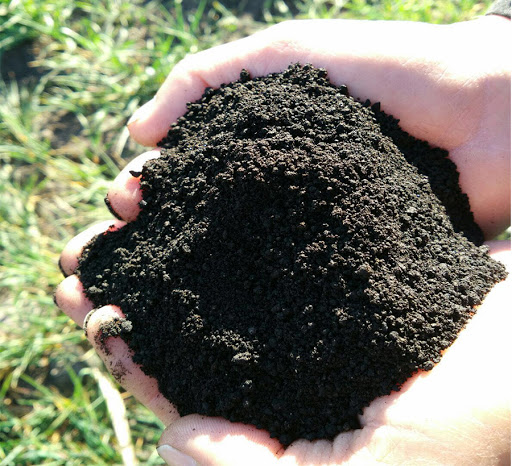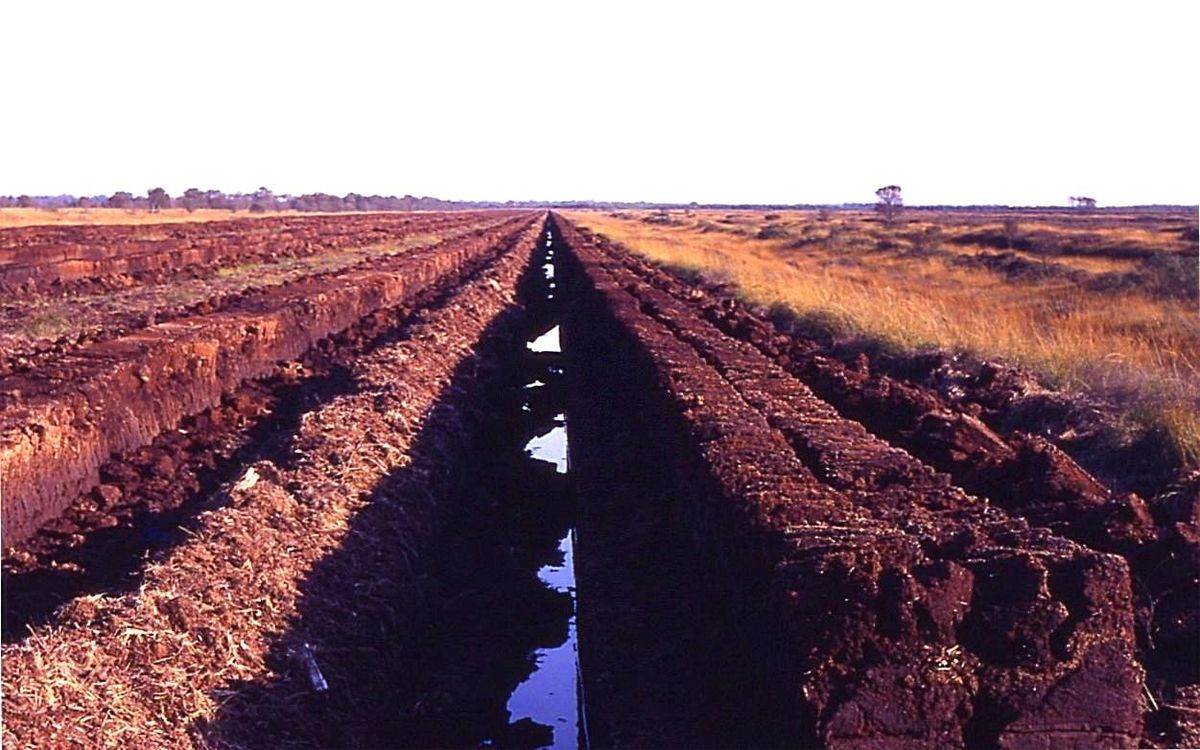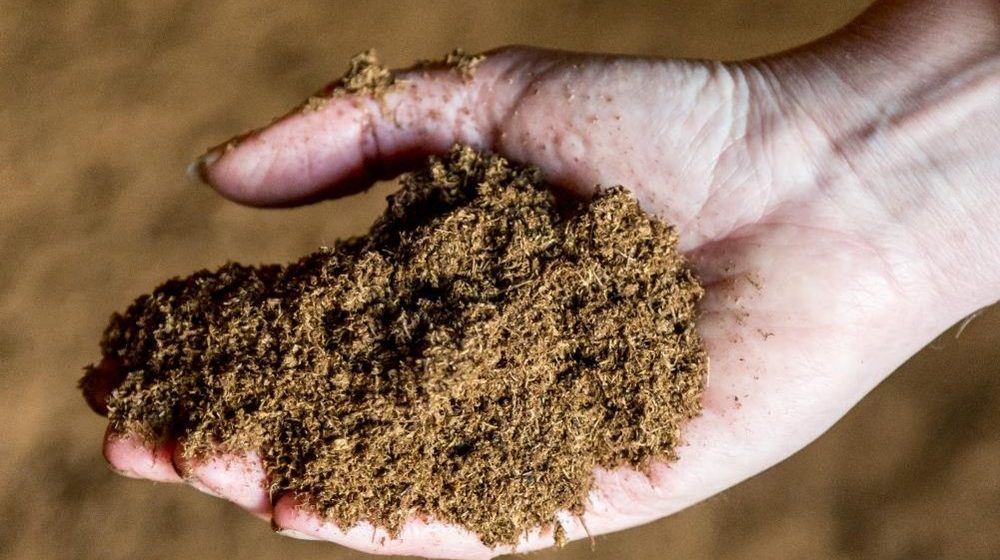Gardening is one of the main practices carried out for the development and control of plants in gardens, for which different substances and techniques are applied for the good treatment of soils and plants, among them Peat stands out, which is nothing more than a fertilizer for plants, in this article we will teach you what Peat is and how it is used.

the peat
Gardening is one of the procedures used by people for the maintenance of their plants, soil and others. All this through the application of techniques and substances that are necessary to correctly feed the riches of mother nature that are sometimes affected by the different climatic and natural conditions that can affect the proper growth of some plants, among them the application of a substance known as peat.
Peat corresponds to a substrate widely used for the cultivation of any type of plant. Its name comes from the generic of various materials that are responsible for proceeding from the decomposition of vegetables, depending clearly on the origin or type of substances, in addition it is also influenced by the different climatic conditions that prevail during its formation, they will influence the decomposition of the materials.
Peat deposits are known as peat bogs, they correspond to lacustrine basins that have a glacial origin, over time they contain plant material that is decomposed or they can also be like freshwater peat. It corresponds to anaerobic media, due to its excess humidity and its oxygenation deficit, causing the organic matter to partially decompose.
It is a widely used fertilizer today because it is highly economical, in addition to having favorable conditions for soils such as conserving moisture and providing minerals necessary for plant growth, which is why it is widely used in gardening.
Peat Formation
We must emphasize that peat bogs correspond to an accumulation of organic matter but this happens only when the rate of accumulation can exceed the rate of mineralization, all this is due to the fact that they are formed in conditions that are not favorable for the biodegradation of the organic matter. organic material; corresponds to sediment formations that accumulate in excess due to humidity and oxygen deficiency, therefore, organic matter only partially decomposes.
The plants have a fairly short life expectancy, they grow due to the benefit offered by the soil until the plant is completely formed, with the passage of time its leaves, flowers and stems lose their conditions, falling to the ground and also due to the presence of different microorganisms such as fungi and diseases that decompose them, normally this type of thing can be found in swamps, wetlands or some environment that favors microbial activity.
Normally in these types of places the conditions are quite scarce, so the formation of peat in these types of conditions is quite slow or scarce, so it takes years to form and reach the desired thickness. Causing the process to be quite slow, so the accumulation of sediments can have a rate of approximately ten every hundred years.
Peat Composition
Peat corresponds to a substrate that is used as an organic fertilizer to enrich the soil and favor the soil and the growth of the plants that are cultivated, this is because it has a large number of nutritional elements that are normally very favored by the NKP fertilizer (Nitrogen-Phosphorus-Potassium) that can also be used together with earthworm humus.
Among the different characteristics of a peat is that it has a high cationic interaction, being highly influenced by the pH, which is acidic between 3 or 4 (blond peat) and between 7,5 and 8 (black peat), in addition to having a great capacity of water retention, it has quite high pore spaces for the accumulation of desired substances, allowing good circulation of air currents and extraction of water for the roots of the plant.
Peat Types
Peat can be used as a highly sought after fertilizer by people for gardening and to carry out any type of crop. Highlighting the fact that climatic conditions such as extreme cold, low evaporation, low radiation rates and varied temperatures, can cause the loss of nutrient content, acid pH, can cause the washing of some substances and favor the emergence of species. unwished.
Due to this, it is necessary to have knowledge of the type of peat and soil in which it will be used, for this, two main types of peat must be highlighted below:
Black peat
It is the type of peat formed in low areas that are also rich in bases (pH between 7 and 8). They are quite decomposed, therefore, their color tends to be dark brown almost black. This type of peat does not have any nutrients, so it is widely used to grow all kinds of plants such as vegetables, even flowers and also for some trees; This is because it allows a good development of the plants.
It is considered to be a very important organic component to be used in various crops, normally it can be extracted from some layers of peat field and origin of Latvian soil types. Normally it is widely used for seedbeds
Blond peat
The blond peat is also known as high peat, because it is formed in the thick layers of the swamps that are found in conditions of low temperatures, with very little sunlight and with very frequent rains, in short, it originates in very mild and with abundant rainfall; Due to all this, this type of substrate is very poor in nutrients.
Its pH is acid between approximately 3 and 4, it can also present high humidity, being very favorable for the development of plant growth, because the nutrients allow them to grow without any problems, favoring the fact of acidifying the soil, which will be quite beneficial for the growth of acid-loving plants, including Japanese maples and azaleas. Depending on the type of soil used in the garden or in the pot, where only 40% of the blonde peat tends to be applied.
The blonde peat is characterized by providing a large number of benefits for the crop, among its main properties the fact of retaining nutrients stands out, in addition to providing a degree of aeration for the formation of plant species. In addition, they have porous properties that will allow the plant to expand its roots without problems and thus absorb all the nutrients necessary for its growth.
It is advisable to mix this type of peat with substrates that enhance its properties and characteristics to ensure good growth of the entire crop and thus improve the production conditions and quality of the product to be obtained.
Peat Applications
Peat is considered a highly sought-after substrate to be used in various areas, especially for facilitating plant growth, standing out mainly for being used in the following areas to be highlighted:
Gardening
Currently it is widely used to cultivate a wide variety of plants such as cacti, also ferns, flowers, trees, among others. Taking into account the nutrients that are present in the peat used; It is normally made up of nitrogen, it corresponds to the most essential nutrient for good plant growth; the soils tend to have a great loss of this mineral, so the soils must be fertilized regularly; It should be noted that it cannot be applied to all plants, such as carnivorous ones, because they will die before their time.
Peat is considered an ideal substrate to grow plants, because it conserves moisture, allowing less irrigation water to be consumed. Favoring the good development of all the roots as it is a porous material. Despite this, its disadvantages should be highlighted, such as being in areas with strong insolation, or with a very predominant summer, it can lose all moisture, in this case it is advisable to hydrate it constantly to avoid losing its properties. For this reason, it tends to be mixed with perlite or coconut fiber.
In this case, its relevance should be highlighted when used in seedbeds, pots and containers, varying according to its properties and the minerals present such as clay, vermiculite, sand or polystyrene grains, all with the aim of improving all its physical properties. . You can also grind and moisten some elements such as nitrogen (N), sulfur (S), magnesium (Mg), or some trace elements such as zinc (Zn), iron (Fe), among others.
All improvements in soil properties with peat will depend on the characteristics of each one. Always keeping in mind its properties of retaining water, its high cation exchange, in addition to the desire to increase the porosity and stability of all aggregates, giving greater structure to all soils.
Skin care
Peat corresponds to an organic matter that is composed of a group of decomposed vegetation from swamps and wetlands, in addition to being used for the soil due to its peculiar properties, being also very beneficial for human health, being widely used for the treatment of various diseases and for the relief of pain, all this is due to its properties of nutritional elements that can be absorbed by the skin. Being also used as a natural moisturizer.
We hope this article has been helpful, we leave you others that will surely interest you:


